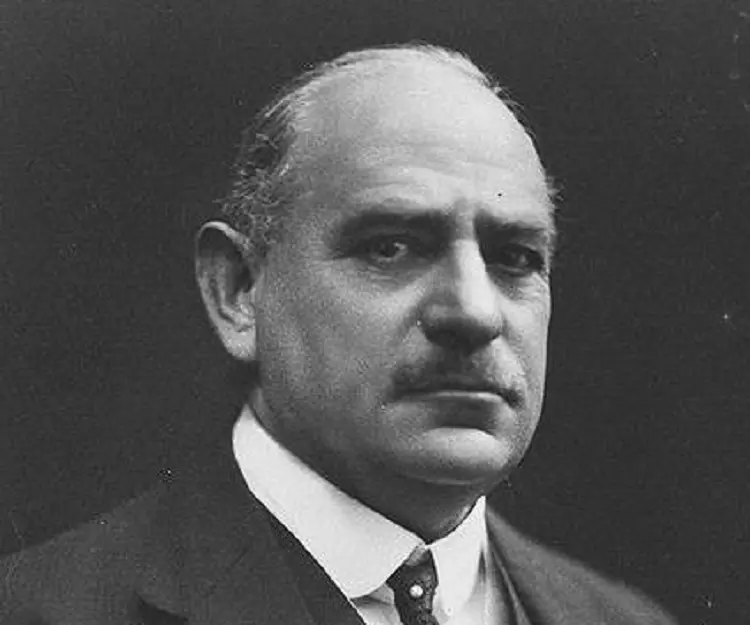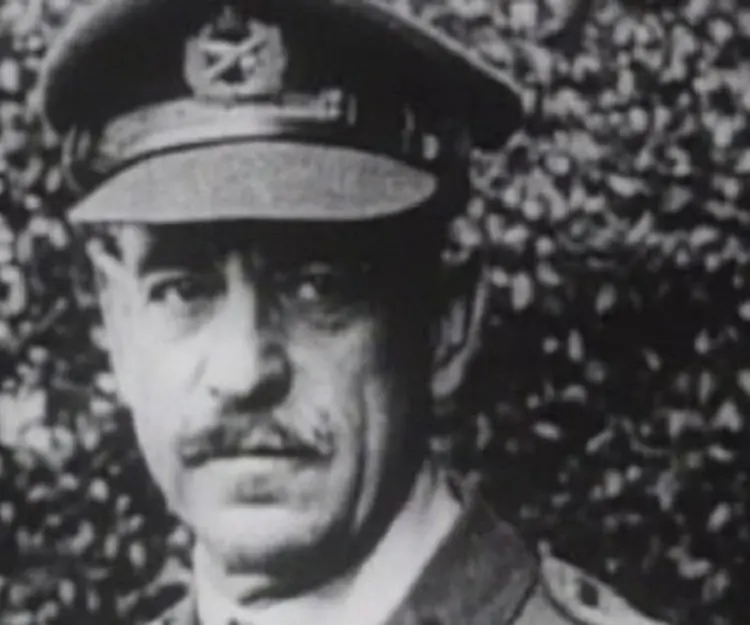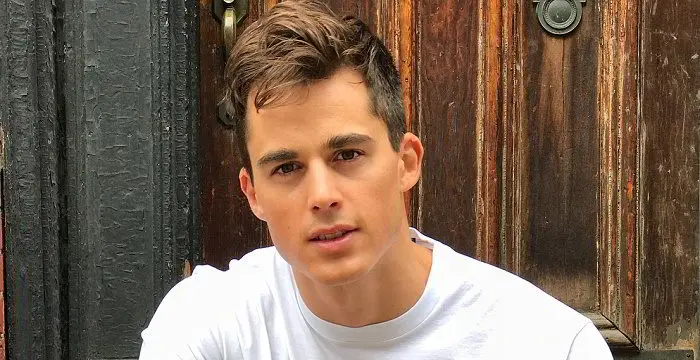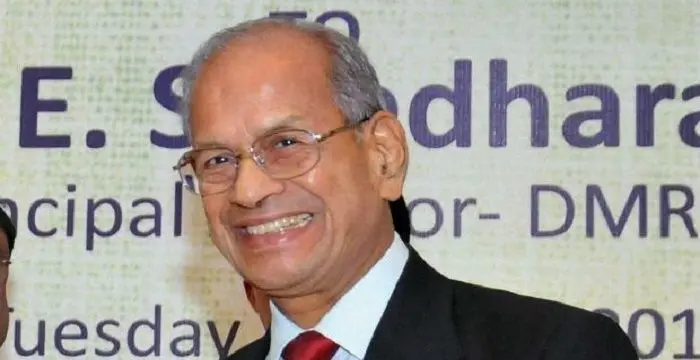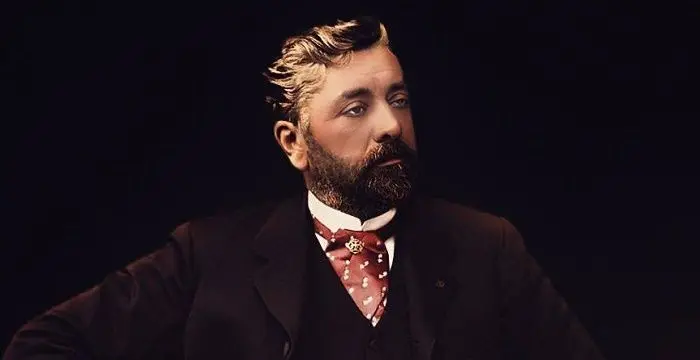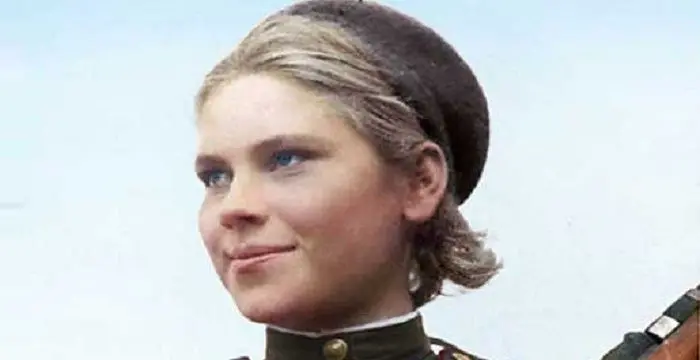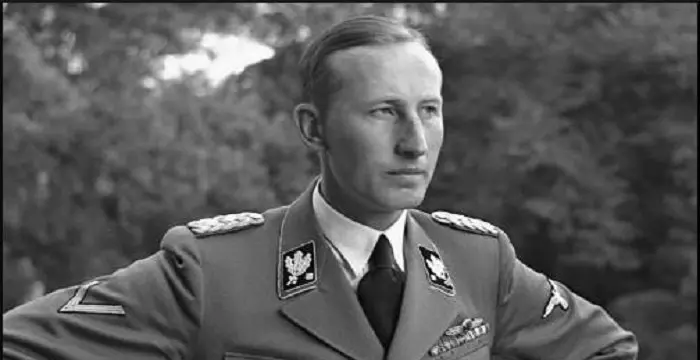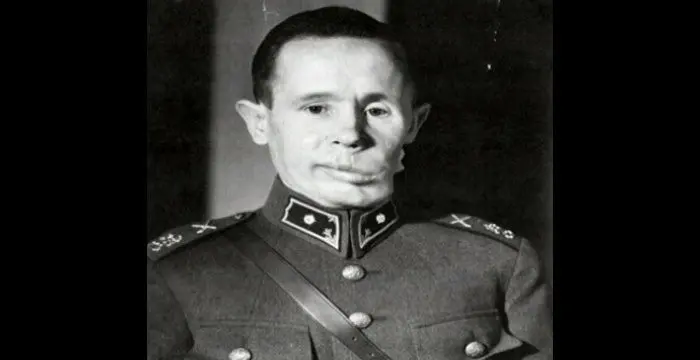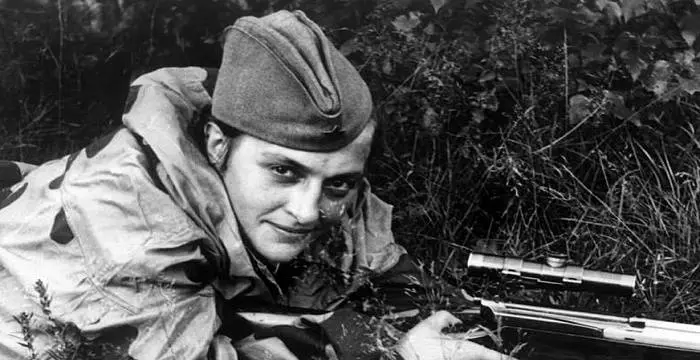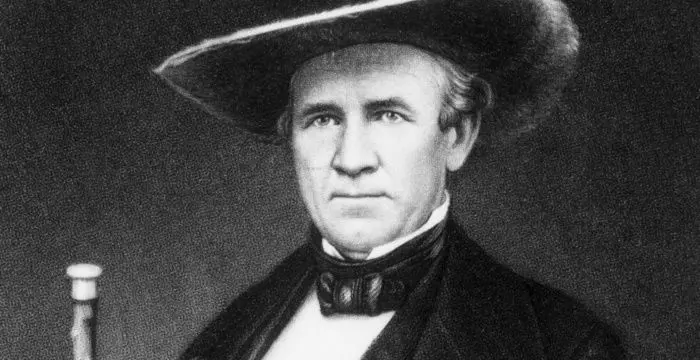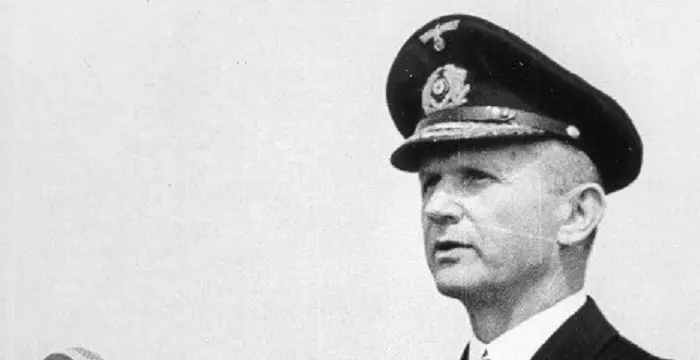
John Monash - Civil Engineers, Timeline and Personal Life
John Monash's Personal Details
John Monash was one of the most prominent leaders in World War I, who had exceptional organizational qualities
| Information | Detail |
|---|---|
| Birthday | June 27, 1865 |
| Died on | October 8, 1931 |
| Nationality | Australian |
| Famous | University Of Melbourne, Engineers, Civil Engineers, Soldiers, Civil Engineers |
| Spouses | Hannah Victoria Moss |
| Childrens | Bertha |
| Universities |
|
| Notable Alumnis |
|
| Founder / Co-Founder |
|
| Birth Place | Melbourne |
| Gender | Male |
| Sun Sign | Cancer |
| Born in | Melbourne |
| Famous as | Civil engineer |
| Died at Age | 66 |
John Monash's photo
Who is John Monash?
John Monash was one of the most famous army officer involved in World War I. He was brilliant as a student and his family provided him with necessary opportunity which helped him pursue higher education. He earned degrees in various subjects such as law, arts and engineering. He even pursued a career as a civil engineer and earned a living. However, after his enrolment at the ‘Melbourne University Regiment’ a steep shift occurred in his career. The commencement of the World War marked the beginning of his military career. He did not receive much training in military affairs nor on warfare. Even then, he exerted immense leadership qualities as a military chief and organized his troops in such a way that proved beneficial. He even trained his troops and prepared them for the impending battles. His personality provided zeal to the army to audaciously combat with the enemies and fight till the end. His organizational qualities were admired by his troops as well his seniors and even earned him several international recognitions. Owing to his training and warring tactics, many major and decisive battles were won by the allied forces. Even after the war over, he was bestowed with many important offices which he retained till his death
// Famous Engineers
Pietro Boselli
Pietro Boselli is an Italian model, engineer, teacher, and fitness athlete who became famous as the ‘world’s sexiest math teacher’. Check out this biography to know about his birthday, childhood, family life, achievements and fun facts about him.
Satya Nadella
Satya Nadella is the current CEO of Microsoft. This biography provides detailed information about his childhood, profile, career, net worth & timeline
Robert Hawking
Robert Hawking is a British software engineer, better known as the eldest son of the English theoretical physicist, cosmologist, and author, Stephen Hawking. Let’s take a look at his family, personal life, career and other interesting facts.
Childhood & Early Life
He was born on 27th June 1865, to Louis Monash and Bertha, née Manasse, in West Melbourne, Victoria.
His family shifted to the Jerilderie town located in New South Wales but to provide John with better educational opportunities, they relocated to Melbourne in 1880 and enrolled at the ‘Scotch College’.
This exceptional student joined the ‘University of Melbourne’ where he pursued subjects like Engineering, Law and Arts. He went on to earn a post-graduate degree in engineering in the year 1893. Two years later, he was awarded a dual degree in arts and law.
Career
He was employed as a civil engineer with contractors and engaged in construction of railways and bridges. He also helped the contractors in legal matters. He was also employed at the ‘Melbourne Harbour Trust’ for some time.
In 1904, he along with engineer J.T.N. Anderson began to work as contractors and consultants. But this collaboration ended the following year.
He then, joined hands with the builder-chemist duo David Mitchell and John Gibson to establish the ‘Reinforced Concrete & Monier Pipe Construction Co.’. The following year, they entered into a partnership with South Australian businessmen to establish ‘S. A. Reinforced Concrete Co.’.
He earned a membership at the ‘Institute of Civil Engineers’ located in London and was also appointed as the president of ‘Victorian Institute of Engineers’.
In 1884, he entered the ‘Melbourne University Regiment’ (formerly known as the ‘University Company’) and three years later, he was made a lieutenant at the North Melbourne Battery.
In 1895, he was appointed as the captain and two years hence he was made a major.
He was promoted to the rank of a lieutenant-colonel in the intelligence corps in the year 1906.
In 1912, he was appointed in the 13th Infantry Brigade and operated as the colonel.
At the onset of World War I, in 1914, he assumed the role of chief censor in Australia and later, after the formation of the ‘Australian Imperial Force’ he was elected to the ‘4th Infantry Brigade’ as the commander. This brigade comprised of four battalions namely the 13th, 14th, 15th and 16th.
This brigade was trained by Monash and they set sail in December the same year. In 1915, the brigade sailed to Egypt and built a camp close to the Heliopolis region. They were then allotted to the ‘New Zealand and Australian Division’ led by Major General Alexander Godley.
This brigade again collaborated with Monash in the ‘Gallipoli Campaign’ and battled against the Turks before the troop was ordered to vacate the place.
In 1916, he was assigned to head his troop to the Western Front. The same year, he was appointed as the major general and given command of the ‘Australian 3rd Division’. He trained the troop and led them in battles such as ‘Battle of Messines’, ‘First Battle of Passchendaele’ and ‘Battle of Broodseinde’.
He was appointed to the position of lieutenant general in 1918, and later, he was appointed to the ‘Australian Corps’ as the commander. Even though he did not receive formal military training, he had a command over the use of aircraft, infantry, tanks and artillery.
In 1918, he led his troop along with other allied forces in the ‘Battle of Hamel’ and emerged victorious. The next victory came in the ‘Battle of Amiens’ which turned the tables in favour of the allied forces and indicated that the Germans were on the losing side.
The same year, under Monash’s guidance the Australian troop s registered many wins in battles fought at regions such as Mont St. Quentin, Chignes, Hargicourta and Peronne. However, the most important highlight of 1918 was his contribution towards the 'Battle of Hindenburg Line' which was a sign of the war nearing its end.
In October 1918, German prince and politician Prince Maximilian of Baden, requested for an armistice.
He was elected as the Director-General of ‘Repatriation and Demobilisation’ department which was constructed after the war was over. He also headed the ‘State Electricity Commission of Victoria’ in 1920.
He was one of the founding members of the ‘Rotary Club of Melbourne’, and also presided over the organization ‘Zionist Federation’ of both Australia and New Zealand.
In 1923, he was appointed at the ‘University of Melbourne’ to the post of Vice-Chancellor and he resumed office for the rest of his life.
Major Works
This army officer played a significant role in World War I, and he is credited as being one of the best generals on the Western Front, Europe. His organizational skills were remarkable and he was also concerned about the welfare of his troops. Even during the battles, he reportedly managed to provide his troops with hot meals.
He was instrumental in some of the major battles won by the allied forces in the war like the ‘Battle of Hamel’ and the ‘Battle of the Hindenburg Line’.
Awards & Achievements
In 1918, he was bestowed with the ‘Knight Commander of the Order of the Bath’, and the following year, he was made the ‘Knight Grand Cross of the Order of St Michael and St George’.
He was made the ‘Grand Officer of the Légion d'honneur’ and was also honoured with the ‘Croix de Guerre’ by France.
This prominent General was also made the ‘Grand Officer of the Order of the Crown’ (Grand-Officier Ordre de la Couronne) and honoured with the ‘Croix de Guerre’ by Belgium.
The United States bestowed him with the ‘Distinguished Service Medal’ which is given to individuals who excel in their services towards the United States military.
Personal Life & Legacy
In 1891, John Monash married Hannah Victoria Moss and the couple was blessed with a child named Bertha. A year after the World War was over, his wife died of a fatal disease.
He authored the book entitled ‘The Australian Victories in France’ which was released in the year 1920.
On 8th October, 1931, this accomplished General suffered a cardiac arrest and breathed his last. At his funeral was attended by approximately 300,000 people who mourned his death. He was given a gun salute in the state funeral and his resting place is in ‘Brighton General Cemetery’.
Trivia
He was behind the introduction of ‘Reinforced Concrete’ (RC) to the sphere of engineering in Australia
// Famous Civil Engineers
E. Sreedharan
E. Sreedharan is an Indian engineer known as the “Metro Man” for his pivotal role in building the Konkan Railway and Delhi metro. This biography of E. Sreedharan provides detailed information about his childhood, life, achievements, works & timeline.
Gustave Eiffel
Alexandre Gustave Eiffel was a French civil engineer and architect who built the famous Eiffel Tower. This biography profiles his childhood, life, career, achievements and timeline.
Isambard Kingdom Brunel
Isambard Kingdom Brunel was the English civil engineer who built the Great Western Railway. This biography of Isambard Kingdom Brunel provides detailed information about his childhood, life, achievements, works & timeline.
John Monash biography timelines
- // 27th Jun 1865He was born on 27th June 1865, to Louis Monash and Bertha, née Manasse, in West Melbourne, Victoria.
- // 1880His family shifted to the Jerilderie town located in New South Wales but to provide John with better educational opportunities, they relocated to Melbourne in 1880 and enrolled at the ‘Scotch College’.
- // 1884In 1884, he entered the ‘Melbourne University Regiment’ (formerly known as the ‘University Company’) and three years later, he was made a lieutenant at the North Melbourne Battery.
- // 1891In 1891, John Monash married Hannah Victoria Moss and the couple was blessed with a child named Bertha. A year after the World War was over, his wife died of a fatal disease.
- // 1893This exceptional student joined the ‘University of Melbourne’ where he pursued subjects like Engineering, Law and Arts. He went on to earn a post-graduate degree in engineering in the year 1893. Two years later, he was awarded a dual degree in arts and law.
- // 1895In 1895, he was appointed as the captain and two years hence he was made a major.
- // 1904In 1904, he along with engineer J.T.N. Anderson began to work as contractors and consultants. But this collaboration ended the following year.
- // 1906He was promoted to the rank of a lieutenant-colonel in the intelligence corps in the year 1906.
- // 1912In 1912, he was appointed in the 13th Infantry Brigade and operated as the colonel.
- // 1914At the onset of World War I, in 1914, he assumed the role of chief censor in Australia and later, after the formation of the ‘Australian Imperial Force’ he was elected to the ‘4th Infantry Brigade’ as the commander. This brigade comprised of four battalions namely the 13th, 14th, 15th and 16th.
- // 1915This brigade was trained by Monash and they set sail in December the same year. In 1915, the brigade sailed to Egypt and built a camp close to the Heliopolis region. They were then allotted to the ‘New Zealand and Australian Division’ led by Major General Alexander Godley.
- // 1916In 1916, he was assigned to head his troop to the Western Front. The same year, he was appointed as the major general and given command of the ‘Australian 3rd Division’. He trained the troop and led them in battles such as ‘Battle of Messines’, ‘First Battle of Passchendaele’ and ‘Battle of Broodseinde’.
- // 1918He was appointed to the position of lieutenant general in 1918, and later, he was appointed to the ‘Australian Corps’ as the commander. Even though he did not receive formal military training, he had a command over the use of aircraft, infantry, tanks and artillery.
- // 1918In 1918, he led his troop along with other allied forces in the ‘Battle of Hamel’ and emerged victorious. The next victory came in the ‘Battle of Amiens’ which turned the tables in favour of the allied forces and indicated that the Germans were on the losing side.
- // 1918The same year, under Monash’s guidance the Australian troop s registered many wins in battles fought at regions such as Mont St. Quentin, Chignes, Hargicourta and Peronne. However, the most important highlight of 1918 was his contribution towards the 'Battle of Hindenburg Line' which was a sign of the war nearing its end.
- // 1918In 1918, he was bestowed with the ‘Knight Commander of the Order of the Bath’, and the following year, he was made the ‘Knight Grand Cross of the Order of St Michael and St George’.
- // Oct 1918In October 1918, German prince and politician Prince Maximilian of Baden, requested for an armistice.
- // 1920He was elected as the Director-General of ‘Repatriation and Demobilisation’ department which was constructed after the war was over. He also headed the ‘State Electricity Commission of Victoria’ in 1920.
- // 1920He authored the book entitled ‘The Australian Victories in France’ which was released in the year 1920.
- // 1923In 1923, he was appointed at the ‘University of Melbourne’ to the post of Vice-Chancellor and he resumed office for the rest of his life.
- // 8th Oct 1931On 8th October, 1931, this accomplished General suffered a cardiac arrest and breathed his last. At his funeral was attended by approximately 300,000 people who mourned his death. He was given a gun salute in the state funeral and his resting place is in ‘Brighton General Cemetery’.
// Famous Soldiers
Roza Shanina
Roza Shanina was a Russian sniper who came to be known as “the unseen terror of East Prussia” during World War II. Find more about her childhood, family, personal life, etc.
Reinhard Heydrich
Reinhard Heydrich was a high-ranking German Nazi official during the World War II. Check out this biography to know about his childhood, family life, achievements and other facts about his life.
Simo Häyhä
Simo "Simuna" Häyhä was a Finnish sniper, considered the most deadly sniper in war history. Find more about his family, childhood, personal life, career, achievements, etc.
Lyudmila Pavlichenko
Lyudmila Mikhailovna Pavlichenko was a Soviet Union sniper. Find more about her family, personal life, career, achievements, etc.
Sam Houston
Sam Houston was a 19th century politician who played a key role in the creation of the state of Texas. This biography of Sam Houston provides detailed information about his childhood, life, achievements, works & timeline.
Karl Dönitz
Karl Dönitz was a German admiral and played an important role in World War II. This biography profiles his childhood, early life, family, naval career, capture, imprisonment, and other facts.
John Monash's FAQ
What is John Monash birthday?
John Monash was born at 1865-06-27
When was John Monash died?
John Monash was died at 1931-10-08
Where was John Monash died?
John Monash was died in Melbourne
Which age was John Monash died?
John Monash was died at age 66
Where is John Monash's birth place?
John Monash was born in Melbourne
What is John Monash nationalities?
John Monash's nationalities is Australian
Who is John Monash spouses?
John Monash's spouses is Hannah Victoria Moss
Who is John Monash childrens?
John Monash's childrens is Bertha
What was John Monash universities?
John Monash studied at University Of Melbourne, University of Melbourne, Scotch College, Melbourne
What was John Monash notable alumnis?
John Monash's notable alumnis is University Of Melbourne
Which company or organization was founded by John Monash?
John Monash was the founder/co-founder of State Electricity Commission of Victoria
What is John Monash's sun sign?
John Monash is Cancer
How famous is John Monash?
John Monash is famouse as Civil engineer
